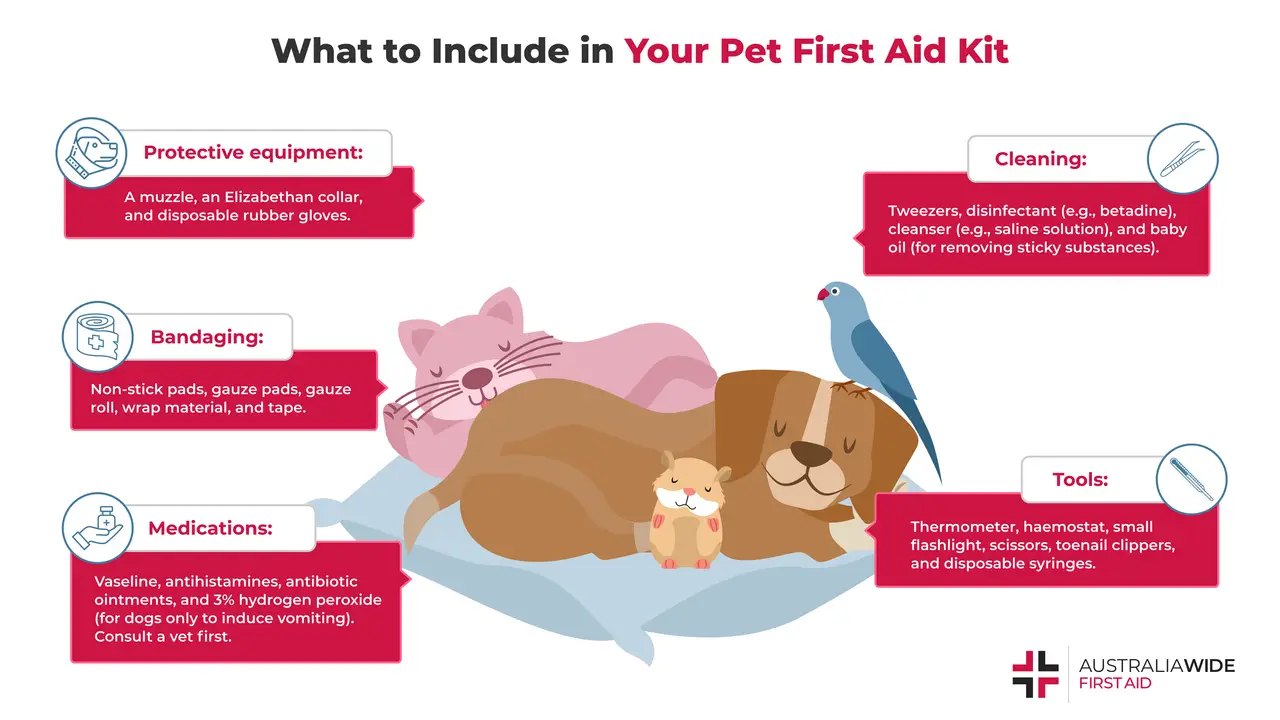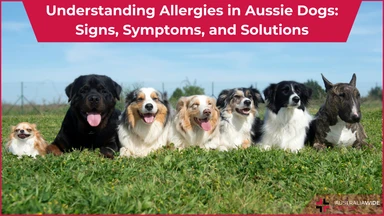How to Make Your Own Pet First Aid Kit


A well-made first aid kit contains enough items to cover common injuries and illnesses but not so many items that the kit is bulky and difficult to navigate.
We will never know when our pets will endure an illness or injury. But we can be prepared. Having a first aid kit available and properly stocked will keep your pet comfortable and stabilized until you can get professional help. A first aid kit for pets shares many items that a kit designed for humans has but with a few modifications. Here is how to build a comprehensive first aid kit for pets.
Check out our other articles on pet first aid in the Resource Library for information on how to administer first aid to your pets.
The first step in any first aid situation is to assess and address safety. Your comprehensive first aid kit should include safety items for you and your pet. That includes:
Cleaning an injury removes any dirt and debris that may further irritate wounds and helps prevent infection.
A bandage is applied when your pet has wounds, abrasions, or musculoskeletal injuries.
Ensure that all tools are safely stored. Tools requiring batteries should be checked regularly.
The following medications do not require a prescription:
Once you have obtained the items for your first aid kit, think twice about how you store them. Depending on your lifestyle and where you are most often with your pet, you may want to keep it in a labeled box at home or a fanny pack in your car, for example. A first aid kit is only helpful when it is accessible.
Also, consider notifying anyone else who cares for your pet where it is located. Dog sitters and dog walkers may also need to use the kit.
For more information on pet first aid, you might like to check out the following articles in our Resource Library:

April 16, 2024
Like humans, our canine friends are susceptible to allergies, which can significantly affect their quality of life. This article aims to shed light on common allergies in dogs, their signs and symptoms, treatment options, and advice on when to consult a veterinarian.

March 19, 2024
From respiratory distress to changes in droppings and abnormal behaviours, this guide outlines the key indicators of illness that require immediate attention. By understanding these warning signs, bird owners can take proactive steps to ensure their feathered companions receive timely medical treatment, ultimately promoting their health and well-being.

February 12, 2024
In the hustle and bustle of our daily lives, it's easy to overlook that our furry friends may not be leading lives as fulfilled as we'd like. Just like humans, dogs too can suffer from monotony, especially those spending large amounts of time indoors. Recognizing and addressing boredom in our canine companions is crucial for their overall well-being.